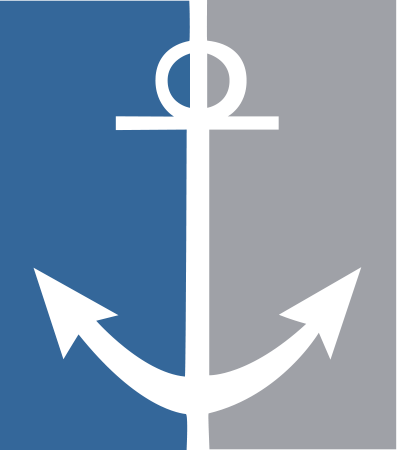Constructed between 1887-1922, the Chicago Area Waterway System (CAWS) provides a connection between the inland river navigation system and the Great Lakes, facilitating the movement of commercial maritime commerce and recreational boating. The waterway also serves an important role in the sanitation and flood control system serving Chicago and Northwest Indiana. In an effort to control the migration of non-native Asian Carp and other aquatic nuisance species, some have proposed physical separation and closure of the waterway.
AGLPA Position
AGLPA opposes closure of navigable waterways in the Great Lakes region. Physical separation of the CAWS will result in the disruption of commerce to southern Lake Michigan ports with negative impact on thousands of jobs. AGLPA supports efforts to prevent migration of non-native Asian Carp and other aquatic nuisance species between the Great Lakes and Mississippi River basins, while at the same time protecting the efficient movement of maritime commerce.
Additional Background
The CAWS is of critical importance to southern Lake Michigan ports. These include the ports of Milwaukee, Chicago, Indiana Harbor, Gary, and Burns Harbor – all of which either ship or receive cargo via the CAWS.
Asian Carp were imported into the southern United States in the 1960s and 1970s for use in the aquaculture industry. Flooding allowed the fish to escape into the Mississippi River system, throughout which it has since migrated. In recent years, Asian Carp have approached the Great Lakes through the Illinois River. Ecologists fear that should Asian Carp enter and infest the Great Lakes, they will diminish the food supply for native fish species and negatively impact the aquatic ecosystem.
Because the CAWS is the only permanent connection between the Great Lakes and Mississippi River basins, in 1996 Congress directed the Army Corps of Engineers to investigate methods for preventing the movement of aquatic nuisance species through the waterway. The outcome of that effort was the design and construction of an electronic barrier, which was activated in 2002 and continues to operate today near Romeoville, Illinois. The barrier deters the migration of Asian Carp and other fish by maintaining an electric field in the water. Since 2002, two additional electric barriers have been placed into service adjacent to the first.
In 2007, Congress authorized the Army Corps of Engineers to conduct the Great Lakes and Mississippi River Inter-basin Study (GLMRIS) to evaluate additional options to prevent the transfer of aquatic nuisance species between the Great Lakes and Mississippi River basin.
In 2009, researchers from the University of Notre Dame discovered Asian Carp DNA in water samples taken from the CAWS close to Lake Michigan. Although their science is disputed, and no Asian Carp have been found in Lake Michigan, these researchers argued that the DNA samples were evidence that the fish had breached the electric barrier and could enter the Great Lakes system.
Subsequent to this discovery, many called for bold action to close the aquatic connection. In 2009, Michigan’s Attorney General sued the U.S. Government and the State of Illinois arguing that navigation locks be closed and that the entire waterway ultimately be separated. Similarly, in 2012, the Great Lakes Commission and the Great Lakes and St. Lawrence Cities Initiative issued a report calling for physical separation of the waterways.
The Corps of Engineers accelerated work on the GLMRIS study. Impatient for action, in July, 2012, Congress mandated a final report within 18 months. In January, 2014, the Corps of Engineers released the GLMRIS report. Although incomplete, the study did lay out a series of eight alternatives for preventing the movement of aquatic nuisance species through the CAWS. The alternatives included a number of concepts, including continuing current management practices, construction of a new specialized lock, and complete physical separation of the waterway. Cost estimates ranged from $68 million to $18 billion. The GLMRIS report did not make a specific recommendation, but rather, presented alternatives for Congressional consideration.
Since release of the GLMRIS report, stakeholder consensus has developed around the idea of controlling the upstream migration of Asian Carp by making modifications to the Brandon Road Lock and Dam near Joliet, Illinois. In April 2015, the Corps of Engineers initiated the GLMRIS Brandon Road Study. In August, 2017, the Corps released the study results recommending a plan which includes: 1) fish management activities such as monitoring, physical removal, piscicides, education and research; 2) construction of a flushing lock; and 3) construction of an engineered channel featuring an additional electric barrier and complex noise technology. The report estimates that the project will cost $275 million and take 4 years to construct. The agency estimates at least 40 days of complete waterway closure and periodic additional closures. In November, 2018, the Corps of Engineers released its final environmental impact and feasibility study on the project, which revised the project cost estimate to $778 million. The so-called “Chief’s Report” recommending the project to Congress was issued in May, 2019, with a revised cost estimate of $830.7 million. Construction of the project was authorized in the Water Resources Development Act of 2020.
Preconstruction engineering and design (PED) work on the project began in late 2020. In January, 2022, the Biden Administration assigned $226 million to the project to initiate construction once the PED work is completed. These funds were made available from the Infrastructure Investment and Jobs Act (IIJA). Congress provided an additional $47.8 million in construction funds for the project in the FY2023 Energy and Water Development Appropriations Bill. In March, 2023, the Corps of Engineers revised the project cost estimate to $1.146 billion.
AGLPA supports continued development of the Brandon Road Interbasin Project to include the construction and incorporation of features in and around the lock that will physically deter the migration of Asian Carp – while at the same ensuring the safety of mariners and the efficient movement of waterborne commerce.

